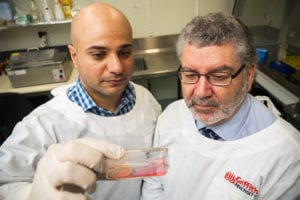‘Cure’ for Cervical Cancer with Gene Editing- Breakthrough Discovery
Scientists from Queensland, Australia, are being hailed for their major breakthrough in cervical cancer research using gene-editing technology.
And this is the first cure for any cancer using this technology said Nigel McMillan who is the lead researcher & director of immunology at the Menzies Health Institute at Griffith University, where a research team used the CRISPR-Cas9 system to target cervical cancer tumors in mice.
As a result of the study, 100% of their mice subjects were actually cured.
During the five-year project, researchers injected specialized nanoparticles into mice bearing tumors caused by the gene E7. This is the gene that can be found in cancers caused by the human papillomavirus (HPV), according to McMillan, whose research work has been published in the journal Molecular Therapy.
He added that he would edit it by introducing some extra DNA that causes the gene to be misread & stop being made. he further explained that this is like adding a few extra letters into a word so the spellchecker does not recognize it anymore.
McMillan added that because cancer must have this gene to produce, once edited, cancer dies.
McMillan then credited the “lightbulb
moment” to a proactive student from Iraq, Dr. Luqman Jubair, who is researching genetic therapy in Australia.
Jubair went away and did something that McMillan did not ask him to do, said McMillan, whose team started with 3 treatments, but found that 7 was the “magic number” of treatments under Jubair’s watch. McMillan added that without Jubair doing that would probably just have a pretty average outcome where tumors sort of slow down a bit & then keep growing.
The Centers for Disease Control (CDC) estimates that some 79 million Americans are living with HPV, which is the cause of 99.7 percent of all cervical cancer, according to McMillan. He noted there are “still many steps” before this method can be applied to humans, though the results are promising.
The CRISPR technology is now already being studied as a potential treatment for HIV, inherited diseases such as Huntington’s & progeria as well as other forms of cancer.
McMillan added that cancer genes are foreign to our human genome that makes them even harder to pinpoint. Of their recent discovery, he concluded that this is the missing tool kit they have in their gene therapy toolbox.






























